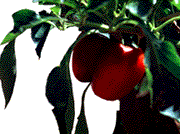

|
|
 Plant Life Plant LifeTerrestrial Plant Life Since artificial uv radiation does not match the natural variety, it is difficult to do controlled scientific experiments which clarify the effects of uv radiation on plant life. Some terrestrial plants seem to be more sensitive than others. Some species that appear particularly sensitive are barley, oats, sweet corn, soybeans, peas, tomatoes, cucumbers, cauliflower, broccoli, and carrots. Food production decreases about 1% for each 1% increase in uvb. However, within these plant species, some species have varieties that appear to be more resistant. About 45% of trees appear to be sensitive to uv increases. Photo: Courtesy of www.arttoday.com.
Both uva and uvb inhibit phytoplankton photosynthesis. In the vicinity of the ozone hole, a 6% to 12% decrease in productivity has been noted during the 10 to 12 weeks of the antarctic spring. Averaged annually, this comes to about a 2% decrease. Although this decrease is relatively small, the overall implications for ocean ecology are unknown.
[
Humans ] [ Animal Life ] [ Plant Life ] [ Home ] [ Teacher Pages ] [ Modules & Activities ] |
HTML code by Chris Kreger
Maintained by ETE Team
Last updated April 28, 2005
Some images © 2004 www.clipart.com
Privacy Statement and Copyright © 1997-2004 by Wheeling Jesuit University/NASA-supported Classroom of the Future. All rights reserved.
Center for Educational Technologies, Circuit Board/Apple graphic logo, and COTF Classroom of the Future logo are registered trademarks of Wheeling Jesuit University.